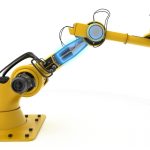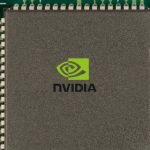The U.S. National Highway Traffic Safety Administration (NHTSA) has recently initiated a preliminary examination into Ford’s BlueCruise technology after receiving reports of two fatal accidents involving the system. This development casts a spotlight on the safety of semi-automated driving technologies, a field that has seen rapid advancement but also growing scrutiny due to safety concerns.
What Triggered the NHTSA Investigation?
The NHTSA’s interest was piqued following two separate incidents reported by drivers of the Ford Mustang Mach-E, wherein it was confirmed that the BlueCruise system was active at the time of the crashes. Both incidents occurred under night-time driving conditions and resulted in fatalities, raising questions about the system’s operational safety during less-than-optimal lighting.
How Does BlueCruise Function?
Ford’s BlueCruise technology is a part of its Co-Pilot360 Active 2.0 suite, which supports semi-automated driving features like speed and lane maintenance. This system, classified as Level 2 automation, still necessitates human oversight despite its capability to manage certain driving tasks. It operates specifically in predefined areas known as “Blue Zones,” covering approximately 97% of controlled-access highways in North America.
What Does This Mean for Ford?
Depending on the outcomes of the NHTSA’s ongoing probe, Ford could either be facing a recall if flaws are discovered, or it might receive clearance if the systems are found compliant with safety standards. Meanwhile, Ford has expressed its commitment to fully cooperate with the NHTSA to ensure thorough investigation and to uphold safety standards.
Semi-automated driving systems have been a contentious topic, blending innovation with significant safety debates. In similar news, The Verge in their article “The Double-Edged Sword of Automated Driving Systems” and Wired’s “The Road Ahead for Autonomous Vehicles” both delve into the complexities of implementing such technologies, discussing the balance between innovation and safety, mirroring the issues now being investigated in the BlueCruise system.
Moreover, a relevant scientific study published in the Journal of Automotive Safety titled “Evaluating the Safety Implications of Semi-Autonomous Vehicles” provides insights that echo the concerns highlighted by recent events. This research underlines the potential risks involved with semi-automated driving systems, especially under challenging conditions, reinforcing the need for comprehensive testing and regulatory oversight.
Key Takeaways from the Current Scenario:
- BlueCruise operates under specific highway conditions only.
- Continuous driver monitoring is essential despite automation.
- Investigations like these determine the system’s future use and improvements.
The ongoing investigation by the NHTSA into Ford’s BlueCruise system underscores the intricate balance between advancing automotive technology and ensuring public safety on roads. It highlights the importance of stringent oversight and the potential need for rapid responsiveness from manufacturers to any emerging safety issues. As autonomous and semi-autonomous technologies evolve, the regulatory landscape will likely need to adapt to address the nuanced risks presented by these innovations, ensuring that advancements in automobile technology do not outpace the measures needed to safeguard the public.










